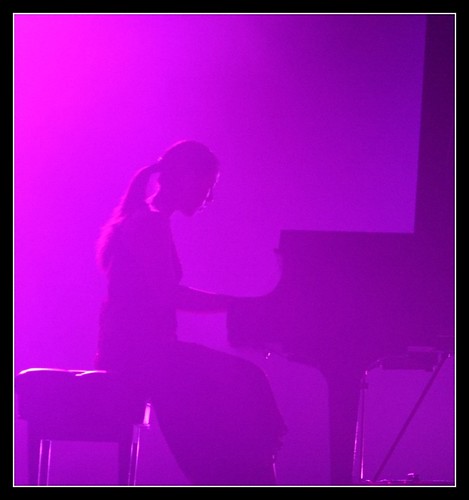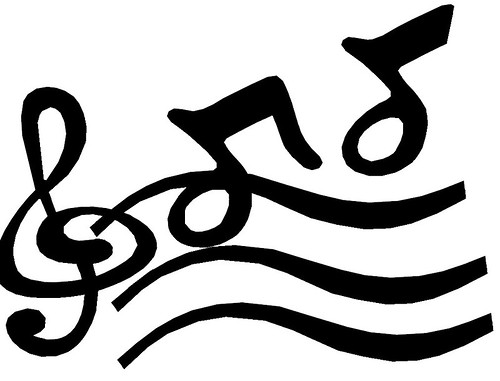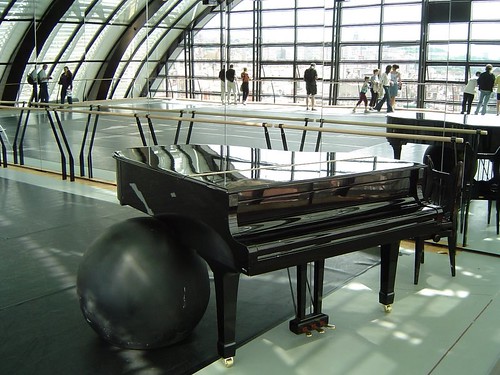Why Is it Important that Students Have Musical Awareness?
 Communication. As students progress in their study or as they move toward teaching or choreography the ability to talk about and interpret music and its relationship to dance with clarity will be an asset. Consider the following scenario, for instance:
Communication. As students progress in their study or as they move toward teaching or choreography the ability to talk about and interpret music and its relationship to dance with clarity will be an asset. Consider the following scenario, for instance:
“Something in three,” the ballet teacher says, and the poor accompanist can’t satisfy the request until the teacher finally yells, “No, no, no! Something in THREE! One, two, three, eee; One, two, three, eee.” — from an article by Monica Dale.
Developing musical artistry (or musicality) in dance requires some understanding of or at least hands on experience with musical form, rhythmical structure, and the other ingredients of music. What is musical artistry? My definition: The ability to connect with accompanying music, interpret it, phrase and add dynamics to movement in relationship to the music (or even in the absence of music) in a way that is unique or interesting.
Staying together. At a more base level it is simply easier to keep students moving together and on the beat if there is a shared comprehension of music.

Bridging the gap
Do your students have a basic understanding of musical concepts? As music and arts programs in public schools have faced cutbacks, I’ve found myself needing to diligently cover meter, tempos, and rhythms in my dance classes to make up for what schools are lacking in this area.
While dance teachers cannot fully nourish this musical malnutrition, there are fortunately many inventive ways that they can lay a foundation for musicality and a competency in musical theory within their classes. The suggestions (or perhaps more accurately, principles) below are by no means a complete guide to accomplishing the task but hopefully they’ll prime the pump of your own creativity. I’d love to hear about additional strategies or ideas that you have in the comments below and I know others would too!
Explore Tempos and Rhythm in your Curriculum
Most classes for younger children incorporate music-related activities through the use of props, instruments, songs or rhymes. Rarely, however, do teachers of students older than 5 or 6 years make exploration of tempo or rhythm part of each dance lesson. It can’t be assumed that older children have “naturally” developed a sense or understanding of these concepts. Continue musical exploration beyond the early years.
Break Patterns
 Whenever possible, seek out music with varying meter or with time signatures other than 4/4. This can be particularly challenging in classes that make use of popular music. Experiment with music from other cultures and push yourself to try something new or that goes beyond your own choreographic or musical preferences. Include your students in the process, urging them to be on the lookout for music with unusual meter and to bring in their best finds for use in class.
Whenever possible, seek out music with varying meter or with time signatures other than 4/4. This can be particularly challenging in classes that make use of popular music. Experiment with music from other cultures and push yourself to try something new or that goes beyond your own choreographic or musical preferences. Include your students in the process, urging them to be on the lookout for music with unusual meter and to bring in their best finds for use in class.
Return to Square One Every Now and Then
Sometimes even older students have trouble finding the beat. It never hurts to revisit such basic concepts as moving on the beat, finding the downbeat, counting the music, or locating phrases within the music. Try having students improvise – moving on each clap, drumbeat, or beat of the music. Then have them try moving on each downbeat, or every 3 or 4 or 5, etc. beats. Create rhythms and patterns like this example (in 3/4 time) move, hold, hold || moo–oo-ove || hold, hold, move! || hold, hold, move!
Music Theory through Dance
There are many creative ways you might incorporate concepts like note value and rhythm in your classes. Try visual aids as simple as halved, quartered, and further divisions of paper. Allow students to explore what it feels like to suspend movement throughout a whole note or dance a rhythmic pattern. Allow them to create and dance their own patterns. Or, help students to recognize the musical structure of phrases or movements which they already know. Explore the uneven quality of a skip for instance – Clap the rhythm. How many fit within a given measure? What would a skip look like if written in musical notation? And, what about chaîné turns? A triplet or waltz turn? A time step?
Music educators know that movement is a great tool in teaching music theory. Dance educators can learn and expand their curriculum with just a bit of what these musicians put into practice in their classrooms… if given the opportunity.
Additional reading:
- Teach music concepts through body movement – MENC 1973
- Dalcroze Eurhythmics: A Brief Introduction
- Rhythmic movement and Public School Music Education – MENC 1991
- Music Education Beyond the Mozart Effect
- Feel It: Rhythm Games for All
- Hap Palmer: Educational Children’s Songs
Why do you feel musical awareness is important?
What are some methods you use in your classes to increase musical awareness?
Nichelle Suzanne is a writer specializing in dance and online content. She is also a dance instructor with over 20 years experience teaching in dance studios, community programs, and colleges. She began Dance Advantage in 2008, equipped with a passion for movement education and an intuitive sense that a blog could bring dancers together. As a Houston-based dance writer, Nichelle covers dance performance for Dance Source Houston, Arts+Culture Texas, and other publications. She is a leader in social media within the dance community and has presented on blogging for dance organizations, including Dance/USA. Nichelle provides web consulting and writing services for dancers, dance schools and studios, and those beyond the dance world. Read Nichelle’s posts.

